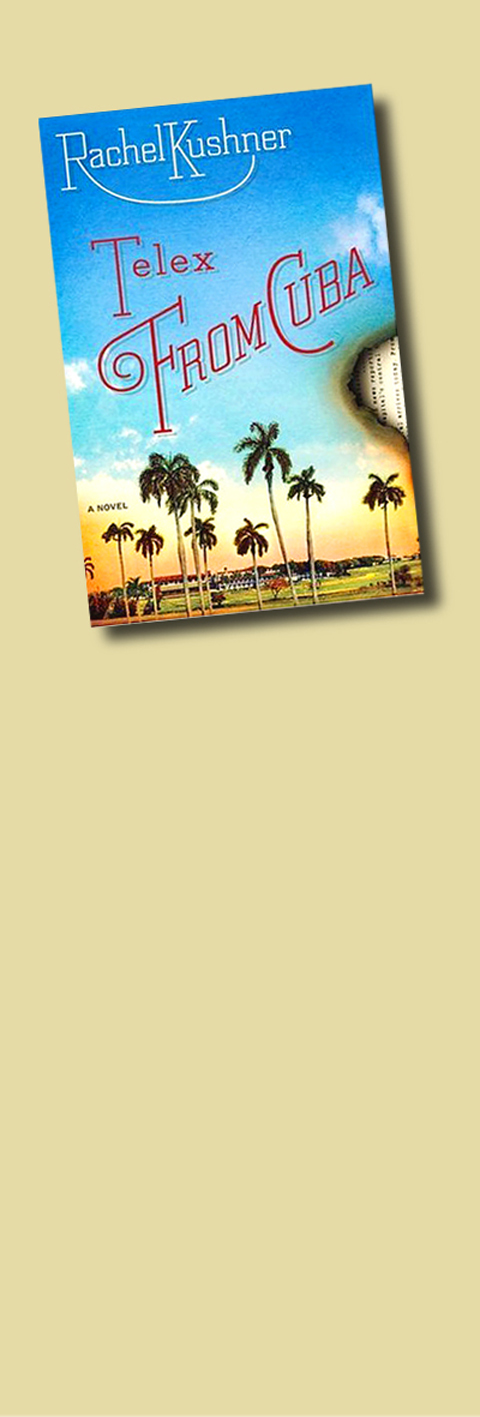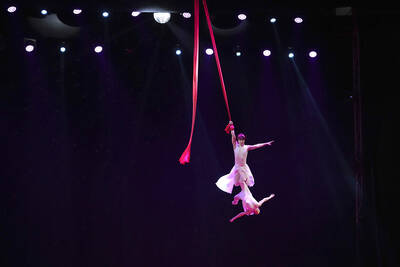The setting for the American expatriate life seems even more exotic now: commodious homes with luxurious accoutrements (private clubs, swimming pools, polo fields, servants galore) in a verdant, tropical setting.
The last place like this now would be Cuba. But that was indeed the way things were in those days before Fidel Castro's guerrillas came down from the mountains and took over the country. The bygone American world in 1950s Cuba is brought vibrantly alive in Rachel Kushner's ambitious but uneven debut novel, Telex From Cuba.
Kushner draws on family experience - her mother grew up in Cuba during the years in the novel - and creates a resonant, richly rendered portrait of life in two neighboring American enclaves in rural Oriente province on the eastern reaches of the island. One town is Preston, dominated by the massive sugar cane fields of the United Fruit Co; the other is Nicaro, where a nickel mine operated by the US government spreads fine dust across the countryside.

Families from different strata of American society fill these two towns, from well-connected bluebloods to a man rumored to be on the run from big trouble with the law back home, perhaps involving murder. All find ready refuge and often second chances in Cuba, which is blessed with so many luscious delights for these well-paid foreigners.
As Kushner writes, "What is more beautiful than Oriente? the Americans all said. What air is more tender? What flowers more brilliant and exotic? What company parties more fun and carefree? What life is better than theirs?"
But this lingering colonial life in the mid-20th century has spindly legs set shallow in what is becoming quicksand.
It requires the constant sweat and acquiescence of Cuban and imported workers, who are so exploited economically and socially that they are but a faint step up from slavery. It also requires collusion with the passing parade of Cuban dictators, friendship of sort always with a price - financial payoffs but also more nefarious methods, including deals with their enemies, domestic and foreign, plus arms trading.
American families settle in these two Cuban towns but soon start to unravel in this moral backwater under the searing tropical sun. Drink is too plentiful, petty irritations and feverish itches fester into upheavals, racism is an ever-present ingredient in the volatile mix.
Charmaine Mackey, wife of the nickel mine general manager, drifts into an affair with a feared Cuban power broker in Nicaro, who treats her with scarcely more than rough disdain. Two free-spirited teen daughters of the Lederer family take town lovers, which escapes their parents' distracted notice for ages. Del Stites, teen son of the top United Fruit executive, becomes so disgusted with the prevalent exploitation and racism that he runs away and joins the Castro rebels in the hills.
Del later helps mastermind the rebels' burning of the Preston cane fields, an audacious dagger at the heart of the American presence, as well as a portentous sign of the dwindling days left for empire.
Kushner is an evocative writer with a cinematic eye for telling detail. She does an excellent job of depicting the lush landscape and lifestyle in these expat communities. There are many fine turns of phrase in her writing, too, as in "a man with down-turned eyes that made his face melancholy, like a song in a minor key."
Her grand ambitions for Telex From Cuba do get the better of her at times. Scaling back some, in characters and approach, could have enhanced the novel's cumulative power.
A major subplot for the novel is set in Havana and involves a high-end nightclub performer, confidante and mistress to various Cuban leaders, as well as a disgraced French operative/dealer. This may provide some insight into larger forces coming into play in the Cuban capital but mostly distracts from the main thread of American lives in Preston and Nicaro.
The Havana plotline adds some unwelcome cliched plot elements. Even more distracting is the recurring narrative of K.C. Stites remembering his Cuban days as a hesitant young teen. This is the only first-person narrative in the novel - the rest is third-person - and it is a jarring shift every time it appears.

The canonical shot of an East Asian city is a night skyline studded with towering apartment and office buildings, bright with neon and plastic signage, a landscape of energy and modernity. Another classic image is the same city seen from above, in which identical apartment towers march across the city, spilling out over nearby geography, like stylized soldiers colonizing new territory in a board game. Densely populated dynamic conurbations of money, technological innovation and convenience, it is hard to see the cities of East Asia as what they truly are: necropolises. Why is this? The East Asian development model, with

Desperate dads meet in car parks to exchange packets; exhausted parents slip it into their kids’ drinks; families wait months for prescriptions buy it “off label.” But is it worth the risk? “The first time I gave him a gummy, I thought, ‘Oh my God, have I killed him?’ He just passed out in front of the TV. That never happens.” Jen remembers giving her son, David, six, melatonin to help him sleep. She got them from a friend, a pediatrician who gave them to her own child. “It was sort of hilarious. She had half a tub of gummies,

The wide-screen spectacle of Formula One gets a gleaming, rip-roaring workout in Joseph Kosinski’s F1, a fine-tuned machine of a movie that, in its most riveting racing scenes, approaches a kind of high-speed splendor. Kosinski, who last endeavored to put moviegoers in the seat of a fighter jet in Top Gun: Maverick, has moved to the open cockpits of Formula One with much the same affection, if not outright need, for speed. A lot of the same team is back. Jerry Bruckheimer produces. Ehren Kruger, a co-writer on Maverick, takes sole credit here. Hans Zimmer, a co-composer previously, supplies the thumping

No more elephant and monkey acts. No more death-defying motorbike stunts. No more singing or acting on stage. Several hundred spectators still clapped constantly when acrobats with Dongchoon Circus Troupe, South Korea’s last and 100-year-old circus, twirled on a long suspended fabric, juggled clubs on a large, rotating wheel and rode a unicycle on a tightrope under the big top. “As I recall the hardship that I’ve gone through, I think I’ve done something significant,” Park Sae-hwan, the head of the circus, said in a recent interview. “But I also feel heavy responsibility because if Dongchoon stops, our country’s circus, one genre